At around 2 p.m. on May 26th Hamas launched a barrage of rockets towards towns and cities in central Israel.
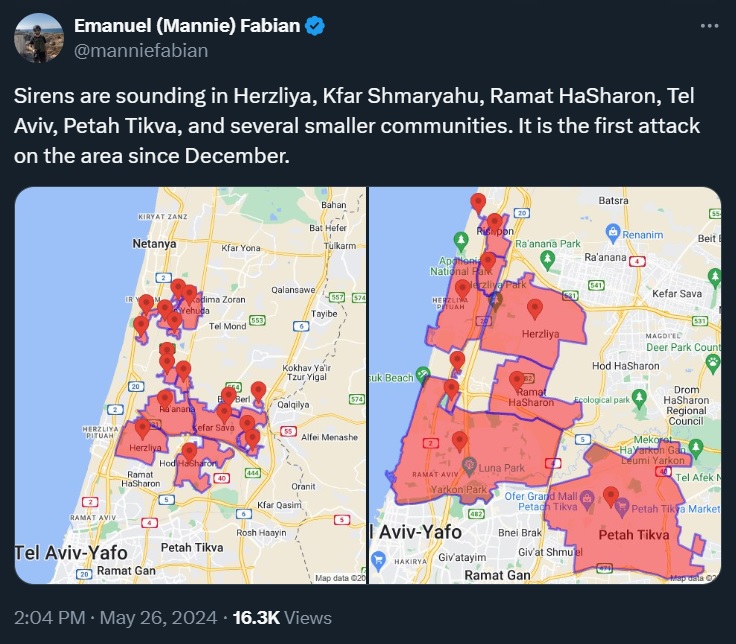
Shortly afterwards, the BBC News website published a ‘breaking news’ one-liner:
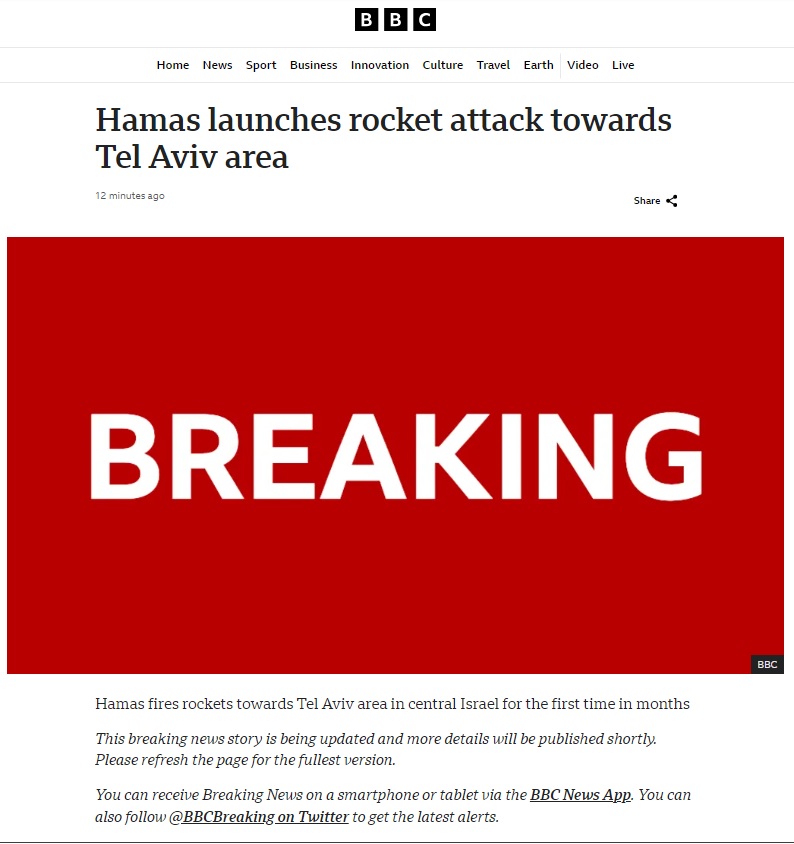
In the hours that followed that item was updated and amended numerous times, with later versions being credited to Lipika Pelham. The version currently appearing online is credited to Lipika Pelham and Dan Johnson and is headlined “Hamas launches rocket attack towards Tel Aviv”.
The ‘where’ part of the story is portrayed as follows: [emphasis added]
“Hamas says it has launched a “big” rocket attack at the Tel Aviv area in central Israel, several of which were intercepted by air defence systems, according to the Israeli military.”
And:
“The Hamas attack on Tel Aviv – the first time in nearly four months that the group has attacked central Israel – came amid an ongoing Israeli military operation in Rafah, which has continued in defiance of a ruling from the UN’s top court.”
As noted here previously, “the UN’s top court” did not order Israel to halt operations in Rafah, meaning that Pelham and Johnson’s claim of “defiance” is redundant.
Only in paragraph eleven do readers discover that the Hamas rocket attack also targeted locations other than Tel Aviv:
“Air raid sirens also sounded in cities including Herzliya and Petah Tikva. The IDF said its Iron Dome anti-missile system had intercepted three of the eight projectiles.
Most of them landed in open areas, but photos published by Israeli media appeared to show minor damage from shrapnel to a home in Herzliya, where an elderly women lived with her caretaker [sic]. Police said two people suffered light injuries.
And in Kfar Saba, north of Tel Aviv, a rocket fell on a field, creating a large crater.”
That part of the report contradicts the earlier claim from Pelham and Johnson in paragraph six that “there were no reports of injuries”.
The main image illustrating Pelham and Johnson’s report shows one of those photos.
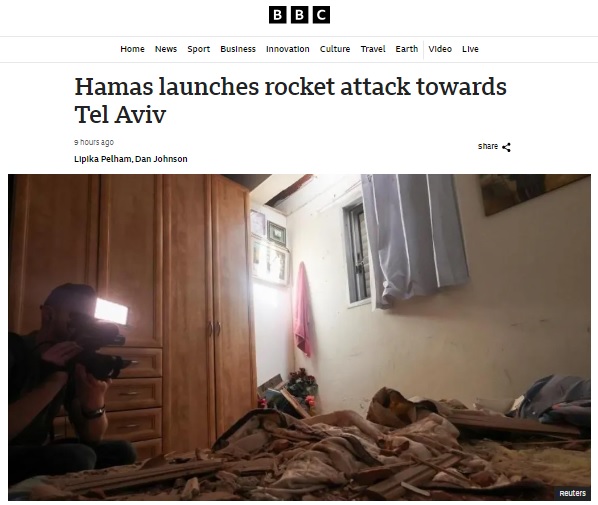
Other photos taken at the scene provided a more informative view of the damage to that home in Herzliya where an 85-year-old woman and her carer (rather than caretaker) live. While the BBC’s report refers to “minor damage”, the woman’s daughter noted in a radio interview that shrapnel had penetrated the ceiling, which then collapsed, that the carer fell as a result of the shock wave and that she was taken to hospital with an injury to her back.
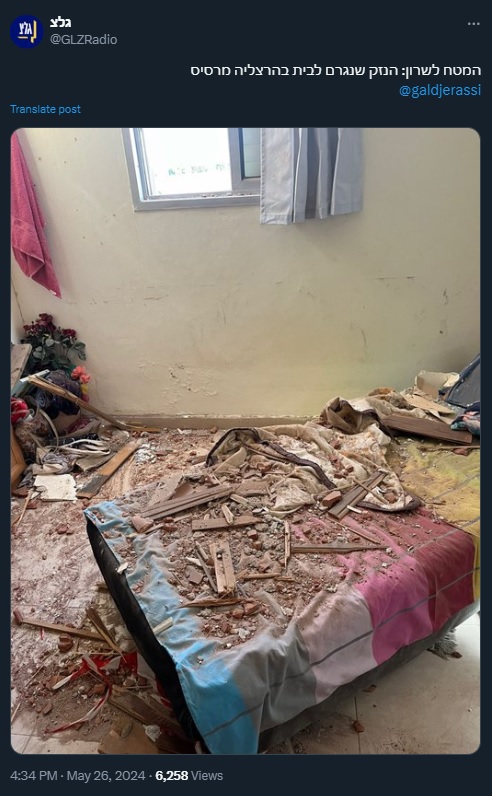
Pelham and Johnson tell their readers that:
“Later on Sunday, sirens also rang out in several border villages in the south adjacent to Gaza, including some where residents have returned to live since the Hamas attack on 7 October.”
In fact, not only did “sirens ring out” but a rocket hit a vehicle in a car park next to a school in one of the communities near the border with the Gaza Strip.
The BBC’s report continues:
“Hamas did not confirm the rockets were launched from Rafah, where fighting has been reported near the Kuwaiti Hospital.”
While Hamas may or may not have confirmed the location of the launch site, there is photographed evidence of the rockets being launched from Rafah.

Later in the day the IDF announced that shortly after the attack had taken place, the rocket launcher from which the missiles were fired was destroyed.
While that strike was not mentioned in Pelham and Johnson’s reporting, their article was amended (before/after) to include another later incident, with the opening paragraphs of the version currently available suggesting to BBC audiences that it was linked to the earlier rocket attacks:
“Hamas says it has launched a “big” rocket attack at the Tel Aviv area in central Israel, several of which were intercepted by air defence systems, according to the Israeli military.
Hours later, Palestinian health and civilian officials said dozens of Palestinians had been killed and injured in an Israeli strike on an area in the southern Gazan city of Rafah, where displaced people were sheltering.
Many of the casualties were living in tents at the Tal al-Sultan camp, the Palestinian Red Crescent Society said, adding that the death toll was likely to rise. An official for the Hamas-run media office said 30 people had been killed.
In a statement, the Israel Defense Forces (IDF) confirmed they had carried out an air strike on “a Hamas compound in Rafah,” where “significant Hamas terrorists were operating”. Acknowledging reports of civilian casualties from a fire ignited by the strike, the army said the incident was “under review”.”
That strike was directed against two Hamas terrorists – Yassin Rabia and Khaled Nagar – both of whom engaged in directing Hamas terrorism in Judea & Samaria.
Quoting an unverified claim (which was subsequently shown to be inaccurate), Pelham and Johnson later tell readers that:
“The Palestinian Red Crescent Society said the area which was hit by the IDF airstrike had been designated for displaced people.”
But aid groups say that nowhere in Gaza is safe for the territory’s estimated two million civilians. They say some Israeli strikes have hit civilians in areas previously designated by the IDF as “humanitarian zones”.”
“Aid groups” such as UNRWA do indeed regularly claim that “nowhere in Gaza is safe”. However, what Pelham and Johnson refrain from telling their readers is that not only does Hamas regularly launch rockets from the vicinity of such humanitarian zones, it also uses civilian facilities such as schools – where civilians often shelter –and other UNRWA facilities as command centres and weapons stores.
While the fire which allegedly caused the deaths of civilians is still under investigation, it is already clear that civilians were not the target of that IDF operation in the Tal al-Sultan region of Rafah.
In contrast, civilians were the target of the missiles launched earlier at central Israel by Hamas terrorists in Rafah – a point which Pelham and Johnson’s description of the attack as “briefly destabilising the relative normality the residents of Tel Aviv […] had been enjoying in recent months” comes nowhere near to making adequately clear.
Related Articles:
BBC REPORTS ON ICJ ORDER FAIL TO ACCURATELY AND FULLY INFORM



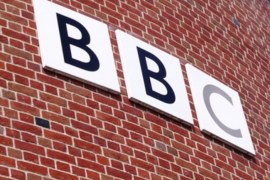

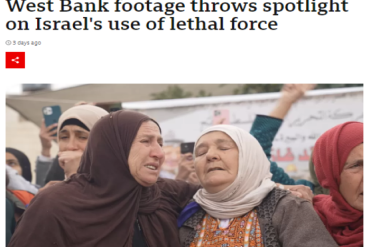
Herzlia/ Raanana are not Tel Aviv – the BBC could have checked on Google Maps. Neither are even suburbs of Tel Aviv!
Accurate reporting my eye – designed to perpetuate the disinformation of the International News Agencies like Reuters etc – BBC Staff in Israel could have checked with the IDF Red Alert app!
it is like saying rockets were fired at London but actually they were targeted at Watford or Camberley or Slough or Canvey Island.